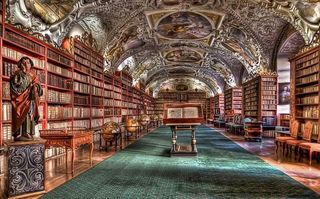More than 90% of secondary students had a digital device by May 2022, according to EdWeek. At the same time, the pandemic focused many non-school educational institutions on how to make their collections, or at least portions of those collections, available remotely or virtually.
Though there is still a need to close the digital divide among low-income families, there is progress for all students to access digital materials outside of school. Educators need to be aware of the potential resources available to enrich their classrooms.
Just in time for the beginning of the 2023-24 school year, the Digital Public Library of America (DPLA) has made more than 48 million images, videos, and texts available for students as open-source materials. The DPLA provides online exhibits as well as curated sets of primary sources that come with teaching guides, including materials about slavery and civil rights.
The DPLA was established in 2013 to be a unified and highly curated platform to aggregate the wide range of resources that have been digitized. The DPLA has also been involved in encouraging the Open Educational Resources movement.
Some examples of the Digital Public Library of America resources include:
John Brown’s Raid on Harper’s Ferry
This collection covers the planning of Brown’s raid as well as the raid itself and the aftermath that many believe directly led to the Civil War.
This provides an app to access and read titles commonly banned from some public libraries.
This collection provides information about the Cold War Space Race as well as current international efforts at cooperation in space.
Public Library Digital Collections
Many traditional world-class libraries have begun to develop their own digital collections. Here are a few to explore:
The Bodleian Libraries, located in Oxford, England, as part of Oxford University, is one of the oldest and most renowned libraries in the world, with a history dating back to the 17th century.
Biblioteca Apostolica Vaticana (Vatican Library)
The Vatican Library has digitized more than a million images from their collections that might offer some wonderful images for teachers, including images of the Gutenberg Bible. T
The British Library’s Flickr Collection
The British Library has released more than a million images on Flickr. This collection includes 325 images of castles, 199 cat photos, and 281 images labeled Women of the World.
Bibliotheca Alexandrina
This is the Egyptian government’s attempt to recapture the spirits of knowledge and learning of the Library at Alexandia in the ancient world.
The LOC provides a wide range of visual resources including a huge collection of Civil War images and Works Progress Administration posters.
Other Public Digital Resources
Beyond curated library and museum collections for students to use, there are many pre-curated collections of open resources for teachers to use to plan lessons and build out their own curated collections.
National Geographic provides information about animals, countries, space, since and history.
This more senior resource project provides information on comparative freedoms around the world.
A one-stop point to find lists of free courses, videos, and other materials for their courses.
Provides a set of curated collections, including specific ones focused on K-12 English, math, and homeschool resources. It also features a wide range of fiction resources as well as some collections for each month and major holidays.
The OER Commons shares a range of curated collections from Shakespeare-related materials to STEAM content.
PBS Video Resources
PBS has a curated set of video resources for educators and students. NOVA materials are also available through the PBS website.
NASA MSFC
NASA’s Marshall Space Flight Center offers classroom resources, including specific materials to support minority engagement in STEM topics.
Virtual Tours & Field Trips
Beyond simply bringing materials into the classroom, there are a range of virtual tours that will allow educators to provide virtual field trips for students to more effectively engage with natural, cultural, and historical sites.
In addition to Tech & Learning’s curated list of best virtual field trips, here are some others to consider:
Louvre in Paris is a world-famous museum with a collection that includes the iconic Mona Lisa. Housed in a historic French royal palace, it is one of the largest and most visited museums in the world.
The Collector.com contains a list with links to 18 virtual museum tours.
UpgradedPoints provides a link to the 75 “best virtual museum tours.”
Google’s Arts & Culture offers dozens of museum connections and features a museum of the day link as well.
VOMA, the virtual art museum, which has no physical space.
Tours of historic sites and places of natural beauty are available virtually as well.
Lazy Historian provides a list of 20 virtual historical site tours from five continents.
Some of these tours include Mount Vernon and the Chinese TerraCotta Army.
National Park Foundation virtual tours
Links to a range of US National Park properties including Crater Lake National Park and Alexander Hamilton’s Manhattan home as well as live webcams of various NPS properties.
Build Your Own!
Once educators are aware of the vast number of available resources, some will wish to develop their own curated lists for their students. One of the easiest methods to do this is using the linking tools within learning management systems.
Some of the easiest to use curation tools include:
Collections Tool in the Edge browser is a simple option.
Google Keep is another method of curating materials.
More advanced curation tools for teachers include Diigo, Pocket, and TES Teach with Blendspace.

